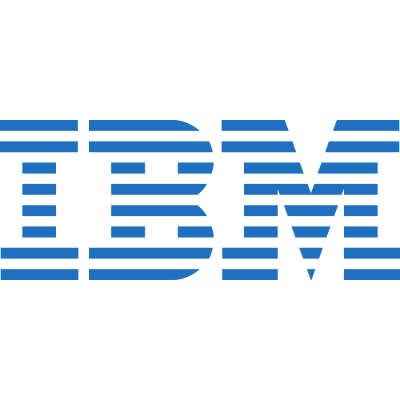Let’s face it, cybersecurity now has to be a major point of emphasis for the modern business. With the immense amount of threats out there, cybersecurity it has grown into a multi-billion dollar a year industry, with no limit in sight. Just a few decades ago, there was no fileless malware, no ransomware, no botnet army lying in wait to DDoS corporate data centers into oblivion. Today, we take a look at the brief (albeit rapidly growing) history of cybersecurity.
PCSOFT Blog
Of the many technology companies in the public eye, IBM is one of the oldest and perhaps the most recognizable--but do you know the story behind Big Blue? It’s a history of innovation and revolution in computing that stretches back over 100 years, to when it was created by uniting three existing companies.
If we asked you what the most significant trend in today’s professional environment is, what would you say? For those who depend on technology to manage and maintain their operations, the cloud has allowed for some of the biggest and best advantages--so much that it’s perhaps one of the most prominent shifts that the world has ever seen.
How the Cloud Works
In essence, the cloud is a term that applies to any off-site computing done by your organization. It’s not far from the reality of the situation to suggest that cloud-based services work by using someone else’s computer to store and process applications and data.
The cloud provider rents their computing resources to you. Depending on their service model, you’ll receive services for a cost based on how much you store, how much power or bandwidth you need, or how many accounts must access it. The cloud provider needs to adhere to these guidelines if they want to keep you as a customer. Furthermore, safety and security are also required, as nobody wants to have their data stored in a place where it’s susceptible to theft. Finally, the cloud provider needs to be able to provide you the services at a rate that’s cheaper than if you were to find a way to accomplish the same thing on your own. This is a considerable amount of information to think about, especially with the other costs involved.
The most important features to think about are how much uptime and security are offered, as both are required by any organization. The problem is that achieving the required results on your own is difficult for an organization with a limited IT budget, making outsourcing to a cloud provider quite ideal. It’s a way to manage risk; you won’t be burdened by unexpected costs in the event of trouble, as it’s the responsibility of the managed service provider and not your organization.
However, the cloud service provider needs to do much more than manage a single computer. Instead, it’s managing many hundreds or thousands of virtual computers stored in a data center, all of which need to be maintained. Since they are being stored in bulk, the cost per unit drops, but security becomes an even larger challenge. Meanwhile, the cloud provider is capable of investing in more expensive and top-shelf solutions that your business might not be able to afford on its own. The end result is enhanced security and capabilities alongside technology that allows organizations to keep up with major industry trends--without the hefty price tag.
This Isn’t the First Time
If all of this sounds familiar, it’s because this isn’t the first time that technology completely revolutionized the business environment. Back in the 1890s, before computers and cyber security were even pain points for organizations, business owners had to worry about how to power their site of operations with electricity. Factories used expensive on-site generators that could hardly be called efficient, and they were all but impossible to maintain without going out of your way to do so. Some employees needed to remain on-site just to ensure that operations didn’t stop due to a generator malfunction, simply because the organization couldn’t afford to allow productivity to halt, even for a few minutes.
This all changed when the Edison Power Company in Chicago found a better way of doing things. With the ability to provide reliable and clean electricity to factories at a more affordable rate, they were able to completely change the way organizations were run. The cost per unit became much cheaper, as the Edison Power Company found they could maintain their infrastructure by employing specialized technicians who focused on the upkeep of this equipment. 20 years later, you’d be hard-pressed to find an organization that didn’t utilize the power grid in some way.
How the Cloud is, More or Less, the Same Thing
Can you imagine producing the bulk of your organization's electricity in-house? While this might lead to humorous imaginary situations, like hamster wheels or treadmill desks, such a notion would be absolutely silly. The same thing can be said for the cloud and your organization's IT infrastructure. The fast-paced shift from on premise servers to cloud-based virtualization, along with the mobile device infestation, has made way for organizations to shed their traditional server and desktop infrastructure altogether in favor of a more streamlined virtual approach. With the cloud, your business will be able to implement solutions like email, document management, line-of-business apps, and so much more, all for a lower cost with enhanced security functionality.
In fact, some future-minded organizations have already begun taking advantage of this shift in ways previously unheard of. Instead of managing in-house servers and desktop workstations, these organizations host their infrastructure in the cloud, allowing for greater flexibility and energy saving costs. It’s just one way that the shift toward cloud computing is helping organizations achieve their maximum potential.
How will your business take advantage of the cloud? If you’re not sure, call us at 02 98730080. PCSOFT’s trusted technicians want to make sure that your business’s technology infrastructure doesn’t skip a beat.
It’s important that your workflow allows you to get the most success out of your workday, yet this is often easier said than done. Everyone has different routines and practices that might work for them, and no one else. If you’re looking for ways to improve your own productivity processes, why not consider these four famous individuals with unorthodox practices?
Ransomware might be a relatively new player in the battle for the Internet, but its short history shouldn’t belittle the damage that it can do to both businesses and users of personal computers. Perhaps you’ve had the misfortune to encounter it for yourself, and your files were locked down because of it. Regardless, ransomware is now a prevalent part of the online crime scene, and people are using it to extort money from innocent users, making it a considerable threat.






